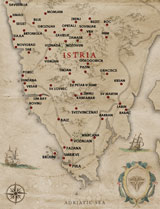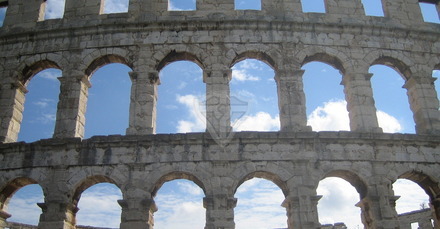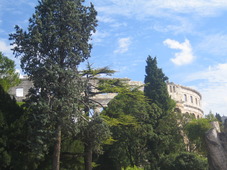to enlarge


or choose the place
from the menu below
 Rome |
 Byzantium |
 Venice |
 Vienna |
 Brioni |
 Smrikve |
 |
 |
 Smrikve is located just few kilometres from the famous Roman
amphitheatre Arena. Pula is another Istrian town with over 3000 years long history. In its long history Pula had two periods
of splendor: the Roman Empire and the Austro-Hungarian Empire period. Many personalities were inspired by Pula's architectural
artworks.
Smrikve is located just few kilometres from the famous Roman
amphitheatre Arena. Pula is another Istrian town with over 3000 years long history. In its long history Pula had two periods
of splendor: the Roman Empire and the Austro-Hungarian Empire period. Many personalities were inspired by Pula's architectural
artworks.





During its long history Pula had two major periods of glory: the Roman period and the Austro-Hungarian Monarchy period. If you come to Smrikve you should take time, at least couple of hours, to visit the places that recall these two periods of Pula’s Renaissance.
Pula is the largest town centre of the Istrian peninsula and is located in a well indented, protected and deep bay, which has given Pula the important role of being a good port providing secure anchorage. Pula’s harbour was considered one of the most secure natural ports in the World.
PULA – VIRTUAL TOUR
 The visit of Pula should start from its most representative monument, the Roman Arena,
that is also the symbol of Pula. The Arena is located at the very entrance of the town and you can park the car right below
the Arena in the parking area named “Karolina”.
The visit of Pula should start from its most representative monument, the Roman Arena,
that is also the symbol of Pula. The Arena is located at the very entrance of the town and you can park the car right below
the Arena in the parking area named “Karolina”.
The Arena’s construction began in the period of Emperor Augustus (from 2 BC until 14 AD). It was expanded by Emperor Claudious during the mid of the 1st century (from 41 till 56 AD) and was completed in the eighties of the 1st century AD (from 79 till 81 AD) by Emperor Vespasianus.